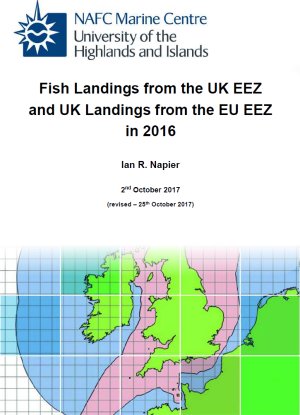EEZ-Report-2017-10-02
Fish Landings from the UK EEZ and UK Landings from the EU EEZ in 2016
2nd October 2017

This analysis of available fisheries data has been carried out at the request of the Shetland Fishermen’s Association (SFA) to provide detailed information on:
- The quantities of fish landed from the UK Exclusive Economic Zone (UK EEZ) by UK and EU fishing boats in 2016.
- The quantities of fish landed by UK fishing boats from the EU EEZ in 2016.
- The balance between UK boats’ landings from the EU EEZ and EU boats’ landings from the UK EEZ.
This complements previous reports on landings by EU fishing boats from the UK EEZ and by UK boats from other areas of the EU EEZ.
Download the Report
Fish Landings from the UK EEZ and UK Landings from the EU EEZ in 2016 (pdf)
Summary
An analysis of available data has been carried out to determine how much fish and shellfish were landed from the UK’s Exclusive Economic Zone (UK EEZ) EU fishing boats, and by UK boats from other areas of the EU EEZ.
The results of the analysis indicate that:
- EU fishing boats landed more fish and shellfish from the UK EEZ in 2016 than UK boats did (58% of the total by weight).
- About one quarter of the fish and shellfish landed by EU fishing boats from the North-East Atlantic in 2016 (23% by weight) was caught in the UK EEZ.
- Only a small proportion of the fish and shellfish landed by UK fishing boats in 2016 (12% by weight) was caught elsewhere in the EU EEZ.
- As a result, EU boats landed 10 times more fish and shellfish (by weight, six times more by value) from the UK EEZ in 2016 than UK boats did from other areas of the EU EEZ.
- The ratio between the amounts landed by EU fishing boats from the UK EEZ and by UK boats from the EU EEZ varied widely between individual species, but for 13 of the 15 principal species EU boats landed more from the UK EEZ than UK boats did from the EU EEZ.
More detailed breakdowns of these results for species groups and for individual species are included in the report.
Contact
Please direct enquiries to Dr Ian Napier.